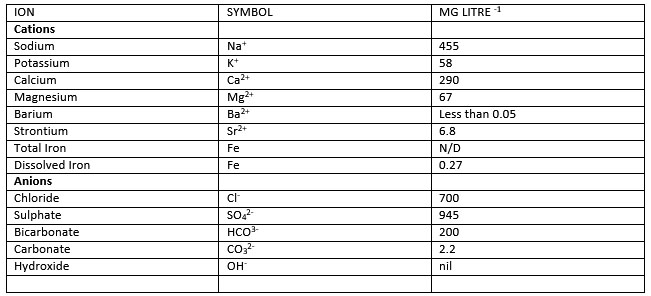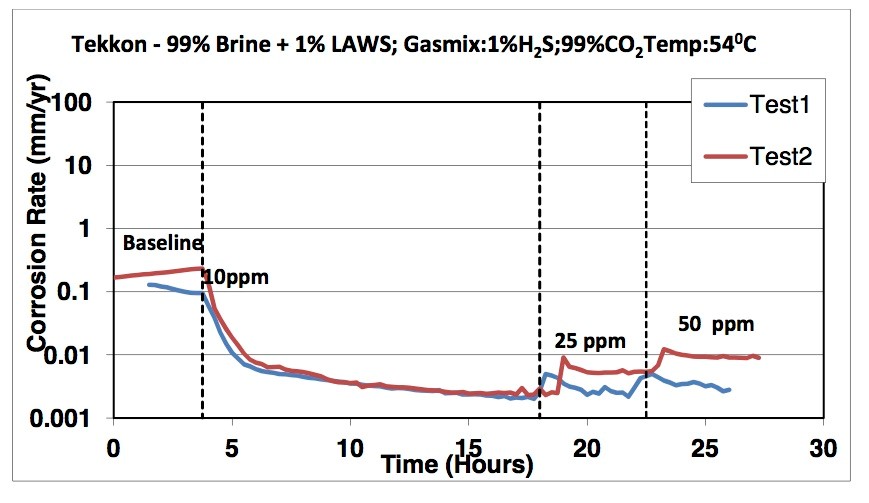Produced Water Chemistry Data:

SCOPE OF WORK
One corrosion inhibitor, Oil Cor XX was assesed in laboratory tests in a simulation of the production system at the convergence point of several well streams and upstream of fluid separation. In this location, the presence of oilfield produced water containing carbon dioxide and hydrofen sulphide is a contributor to the internal corrosion of oil and gas pipelines and processing equippment.
Scope of Work as follows:
Inhibition of corrosive conditions in simulated fluids using Rotating Cylinder Electrode Equipment is in accordance with the general concepts of ASTM G185-06 (2016), Standard Practive for Evaluating and Qualifying Oilfield and Refinery Corrosion Inhibiitors Using the Rotating Cylinder Electrode. The corrosion rate in the synthetic produced water brine was assessed through a stabilised baseline period of at least 4 hours followed by application of inhibitor.
ROTATING CYLINDER ELECTRODE CORROSION INHIBITOR TESTS
The conditions of the corrosion test were designed to simulate the upstream corrosion, and the synthetic oilfield produced brine was heated and sparged with the corrosive gas containing CO2 and 1% H2S. The test vessels were heated to the test temperature of 54 oC and, once stable, monitoring of the baseline corrosion rate was commenced. The corrosion rate was measured using Linear Polarisation Resistance on the Rotating Cylinder ( Working) Electrode, rotating at a speed to generate a 20 Pa shear on the surface of the electrode.
It must be noted that the water analysis containing high levels of calcium, carbonate and sulphate, along with comparatively lower levels of chloride indicated that a fairly benign corrosivity might be expected. A supplied pH value of pH 8.14 if taken at face value may also be an indicator of low corrosivity, but this must be acknowledged with some caution as no background information on the provenance or condition of the sample used fort he pH measurement was given. The temperature of 54 oC and the presence of 1%H2S confirmed the expectaation during the generation of the low baseline corrosion rate of 0.15 mm/yr.
Application of 10 ppm of the Oil Cor XX resulted in a reduction of corrosion by inhibiting down to less than 0.003 mm/yr, an average protection of 98%. Whilst this protection is thought to be adequate, the incrmental addition of inhibitor up to 25 and 50pm was carried out for completion, but no additional protection was measurable. It is thought that a slight reduction in inhibitory effect with the extra inhibitor may be due to surfactant properties or a cleaning effect from the inhibitor’s components reacting with thes established inhibitor/sulphide film on the surface of the rotating electrode. The inhibited corrosion was maintained below 0.01 mm/yr, an average of 96% protection.

It can be concluded from the above chemical screening assesment that, under the laboratory conditions, Oil Cor XX is effective at inhibiting sour corrosion at 10 ppm.
